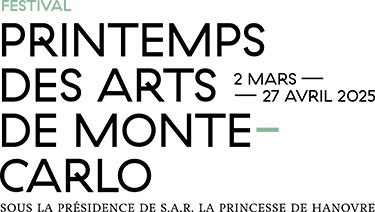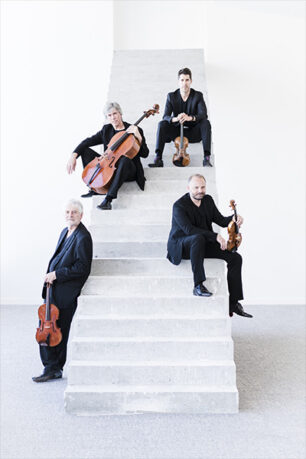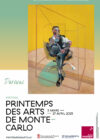“In the quartet, [the genius of execution] sacrifices all the richness of the instrument to the general effect; it takes on the spirit of that other genre of composition whose charming dialogue seems to be a conversation between friends who communicate their sensations, their feelings and their mutual affections”, Pierre Baillot writes in his famous Méthode de violon (Art of the Violin) published in 1793. From the outset, the string quartet was conceived as a musical discussion imitating the “art of conversation” developed in France by Fontenelle, Furetière, Diderot and Madame du Deffand. Linked to the pleasure of exchanging views, debating ideas or intellectual jousting, this social art spread to courts and salons, before serving as a model for musicians. In 1733, Alexandre Villeneuve composed his Conversations en manière de Sonates pour deux dessus sans basse, followed a few years later (1743 and 1756) by Louis-Gabriel Guillemain’s Sonates en quatuors ou conversations galantes et amusantes. The preserve of connoisseurs and amateurs, played by members of the aristocracy and bourgeoisie alike, the quartet soon became the symbol of a taste for conversation recaptured in today’s concert, which multiplies layers and perspectives.
Developed from a variety of traditions, including the divertimento and scholarly writing for four voices, the quartet took root in the 1750s thanks to composers such as Georg Christoph Wagenseil, Franz Xaver Richter and Luigi Boccherini. Although he was not the inventor of the genre, Joseph Haydn made a major contribution to its definition through the sheer number (over eighty) and quality of the works he created. The String Quartet Op. 76, No. 4 (1797) is one of the last complete series he completed at the height of his fame. The title “Sunrise” is not written in his own hand, and was probably given by the publisher to personalise the work – and sell it better – by alluding to the calm, airy recitative that opens the introductory Allegro. The piece encapsulates all of Haydn’s contributions to the genre: refined thematic work, elegance of the lines, diversity of moods within and between movements, careful balancing of the four players, mastery of counterpoint, and a sense of surprise, as in the Presto which unexpectedly crowns the Finale.
Haydn’s blend of skill, erudition and humour was such that his opuses frequently served as models for his contemporaries. Wolfgang Amadeus Mozart composed his “Milanese” and “Viennese” quartets in response to the publication of Haydn’s String Quartets Op. 17 and Op. 20, thus maintaining a friendly conversation with the elder composer. In the early 1780s, he even decided to dedicate six quartets to him, which he presented to him in September 1785 with an affectionate dedication: “A father, having resolved to send his sons into the vast world, felt that he should entrust them to the protection of a man who was very famous at the time, and who by a stroke of good fortune was, moreover, his best friend. And so, famous man and dear friend, I present to you my six sons. They are the fruit of a long and laborious effort.” The quartet entitled “Dissonance”occupies a special place in the series. The title was given in the following century by the famous German violinist Joseph Joachim, who was intrigued by the Adagio that introduces the first movement, combining chromaticism, minor colouration and a disharmonious chain of sounds. The major tone, melodic generosity and robustness of certain pages, such as the minuet, alternate with an often dense contrapuntal fabric, a great harshness of discourse or sudden switches to minor tones, as if the entire quartet were a struggle between light and shadow.
Conceived in five brief movements, Francisco Alvarado’s Konsonanzenquartett (2021) extends the pleasure of conversation beyond time and space, combining motifs borrowed from the Mozartian quartet with mathematical sequences based on fugitive, evanescent modes of playing. A sophisticated system of divergences and “doubles” organizes the fabric, contrasting rhythmic continuity with the exhaustion of instrumental gestures, thematic sections with dematerialised stretches, static and flat periods with mechanical pulsations and shifted accents, and elaborate developments with moments of improvisational spirit. The work can also be seen as an aesthetic melting pot where several historical sources enter into a dialogue and resonate with each other: the classical quartet, American repetitive music, Borges’ fantastical tales as well as Helmut Lachenmann’s “musique concrete instrumentale”, dominated by gestures and extended playing techniques – white sounding natural and unnatural harmonics, glissandi, sudden tears in the fabric, silences, crackles, whistles… The dialogue and spirit of conversation are thus focused not only on musical and literary references, but also on material, style and form, as well as on an imaginary world that abolishes temporal or geographical distances.
Jean-François Boukobza



